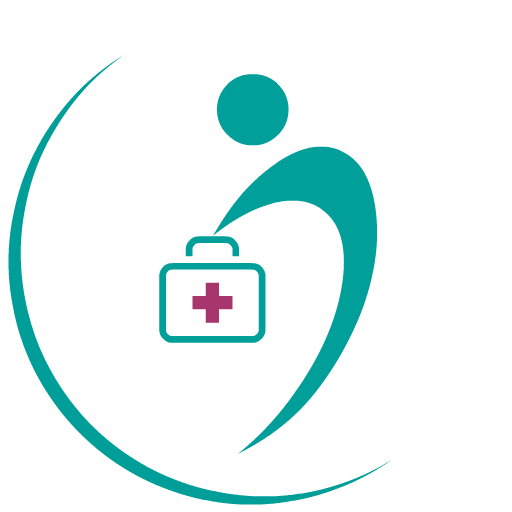Stroke and Transient Ischemic Attack (TIA) are two conditions that affect the blood flow to the brain.
They are both serious conditions that require prompt medical attention. In this blog, we will discuss the causes, symptoms, treatment, and prevention of these conditions.
Stroke:
Stroke is a condition that occurs when the blood supply to a part of the brain is interrupted or reduced, depriving the brain of oxygen and nutrients. This can be caused by a blood clot or a burst blood vessel in the brain. Stroke is a medical emergency and requires immediate treatment to minimize the damage to the brain.
Causes of Stroke:
There are two main types of stroke: ischemic and hemorrhagic. Ischemic stroke occurs when a blood clot blocks a blood vessel in the brain, while hemorrhagic stroke occurs when a blood vessel in the brain bursts.
Some of the common causes of ischemic stroke are:
Atherosclerosis: a condition in which the arteries become narrowed and hardened due to the buildup of plaque.
Blood clots: Blood clots can form in the blood vessels and travel to the brain, causing a stroke.
Heart disease: Heart disease can lead to the formation of blood clots that can cause a stroke.
High blood pressure: High blood pressure can damage the blood vessels in the brain, increasing the risk of stroke.
Some of the common causes of hemorrhagic stroke are:
Aneurysm: A weakened blood vessel can balloon out and eventually burst, causing bleeding in the brain.
Arteriovenous malformation (AVM): An abnormal connection between arteries and veins can rupture, causing bleeding in the brain.
High blood pressure: High blood pressure can cause the blood vessels in the brain to rupture, causing bleeding in the brain.
Symptoms of Stroke:
The symptoms of stroke can vary depending on the part of the brain affected. Some of the common symptoms of stroke are:
Sudden numbness or weakness on one side of the body
Sudden confusion or difficulty speaking or understanding speech
Sudden trouble seeing in one or both eyes
Sudden trouble walking, dizziness, or loss of balance or coordination
Sudden severe headache with no known cause
Treatment of Stroke:
Stroke is a medical emergency and requires immediate treatment to minimize the damage to the brain. The treatment of stroke depends on the type of stroke and the severity of the condition.
Some of the common treatments for ischemic stroke are:
Clot-busting drugs: These drugs can dissolve blood clots and restore blood flow to the brain.
Mechanical thrombectomy: This procedure involves the removal of the clot from the blood vessel using a catheter.
Some of the common treatments for hemorrhagic stroke are:
Surgery: Surgery may be required to remove the blood clot or repair the damaged blood vessel.
Coiling or clipping: This procedure involves blocking the blood flow to the aneurysm to prevent it from rupturing again.
Transient Ischemic Attack (TIA):
Transient Ischemic Attack (TIA), also known as a mini-stroke, is a temporary interruption of blood flow to the brain. TIAs are similar to strokes in that they are caused by a blockage or clot in the blood vessels, but the symptoms are temporary and usually resolve within a few minutes to hours. TIAs are often a warning sign of an impending stroke and should be taken seriously.
Causes of TIA:
The causes of TIA are similar to those of stroke. TIAs are often caused by a blood clot or atherosclerosis, which narrows the blood vessels in the brain, reducing blood flow.
Symptoms of TIA:
The symptoms of TIA are similar to those of stroke but are temporary and usually resolve within a few minutes to hours. Some of the common symptoms of TIA are:
Sudden numbness or weakness on one side of the body
Sudden confusion or difficulty speaking or understanding speech
Sudden trouble seeing in one or both eyes
Sudden trouble walking, dizziness, or loss of balance or coordination
Sudden severe headache with no known cause
Treatment of TIA:
TIAs require immediate medical attention, even though the symptoms may resolve quickly. The treatment of TIA is similar to the treatment of stroke and aims to prevent a future stroke from occurring.
Some of the common treatments for TIA are:
Antiplatelet drugs: These drugs can prevent blood clots from forming and reduce the risk of a future stroke.
Anticoagulant drugs: These drugs can prevent blood clots from forming and reduce the risk of a future stroke.
Carotid endarterectomy: This surgical procedure involves removing the plaque buildup in the carotid artery, reducing the risk of a future stroke.
Prevention of Stroke and TIA:
The best way to prevent stroke and TIA is to reduce the risk factors. Some of the common risk factors for stroke and TIA are:
High blood pressure: High blood pressure is a major risk factor for stroke and TIA. It is important to monitor blood pressure regularly and take steps to control it if it is high.
Diabetes: Diabetes can damage the blood vessels in the brain, increasing the risk of stroke and TIA. It is important to manage blood sugar levels to reduce the risk.
Smoking: Smoking can increase the risk of stroke and TIA. It is important to quit smoking to reduce the risk.
High cholesterol: High cholesterol can lead to the buildup of plaque in the blood vessels, increasing the risk of stroke and TIA. It is important to manage cholesterol levels to reduce the risk.
Obesity: Obesity can increase the risk of high blood pressure, diabetes, and high cholesterol, increasing the risk of stroke and TIA. It is important to maintain a healthy weight to reduce the risk.
In conclusion, stroke and TIA are serious conditions that require prompt medical attention. It is important to recognize the symptoms and seek medical attention immediately. By reducing the risk factors and taking steps to prevent stroke and TIA, we can reduce the incidence of these conditions and improve the quality of life for those affected by them.
Blogs
Stay connected to health experts and read what they have to say via DocSmart.
Please sign up to create your own blog





